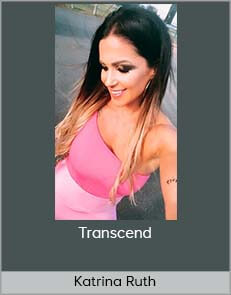How Conversation Works – 6 Lessons for Better Communication
$35.00$94.95 (-63%)
this highly practical course focuses on the fundamental principles you need to know to become more conversationally aware and savvy at home, in the workplace, and beyond.
How Conversation Works – 6 Lessons For Better Communication

Check it out: How Conversation Works – 6 Lessons for Better Communication
How do you make conversation with someone you have just met? When is communicating by email ill-advised? How do you say “no” without using that dreaded word? Regardless of age or occupation, conversation can be tricky. And like it or not, it’s one of the most important things you do on a daily basis. Successful conversations help you advance professionally and make, maintain, and deepen relationships. Moreover, research shows that talking, when done on a substantive level, is correlated with a feeling of happiness and general well-being.
Hide Full Description
Being a great conversationalist requires practice and effort. The good news is it’s a skill set anyone can acquire and refine. In just six lectures, How Conversation Works: 6 Lessons for Better Communication will teach you key strategies that can dramatically improve your ability to converse with anyone, from strangers to supervisors. Delivered by award-winning English professor Anne Curzan of the University of Michigan, this highly practical course focuses on the fundamental principles you need to know to become more conversationally aware and savvy at home, in the workplace, and beyond.
You’ll be amazed by how much you can learn by stepping back from conversations and examining how they operate. You’ll notice things you never picked up on before—like what kind of speaker you are, the strategies you typically rely on (often without realizing it), and the subtleties of the strategies others may use when speaking with you. You’ll find yourself putting these lessons into practice to create more effective dialogues from the very first lecture.
Choose Your Words Wisely
An expression like “shooting the breeze” makes conversation sound easy and free-flowing, but even low-stakes conversations have an underlying systematic structure that propels them along. This course examines that framework while showing you how the effective selection of words can help you forge connections and accomplish your objectives.
Professor Curzan walks you through techniques for negotiating a variety of difficult situations, from proffering successful apologies to engaging in “face-threatening acts”—those uncomfortable moments that have the potential to do damage if your words aren’t chosen carefully.
You’ll learn graceful ways of
pointing out a mistake;
asking someone to do something he or she doesn’t want to do;
preparing a person for “no”;
asking for a big favor; and
providing information the recipient doesn’t want to hear.
Conversations can only deepen connections when you pull your weight. In How Conversation Works, you’ll learn this involves knowing how to skillfully open and close an exchange, take turns speaking or “negotiate the conversational floor,” and send people subtle signals.
Perhaps most important is sharing the burden to make discussions feel more mutual and enjoyable. These lectures arm you with numerous conversation-facilitating devices such as
asking your fair share of questions and follow-up questions, which requires active listening;
providing informative (but not overly informative!) answers to other people’s questions;
introducing new topics for discussion and picking up on the topics of others; and
telling good stories and helping good stories along.
Talk Your Way to Success
Whether you want to build rapport with colleagues, promote your accomplishments in an interview, give a winning presentation, ingratiate yourself with your boss, or even create a connection on a first date, knowing what to say and how to say it allows for more productive, smoother interactions. How Conversation Works helps you get ahead by outlining simple techniques for accomplishing all of this and more.Short vignettes featuring professional actors demonstrate what to do—and what not to do—in a variety of everyday scenarios such as striking up a conversation at a party. In video formats, green-screen technology places the professor in a range of environments as she provides concrete advice for taking an uncomfortable conversation in a new direction, making polite requests, mastering the “humble brag,” limiting your “talk time,” and monitoring your use of distracting discourse markers such as “um” and “you know.”
In addition to sharing these out-the-door tips and techniques, Professor Curzan dispels common myths about conversation and presents enlightening research on
how the conversational styles of men and women share much in common, despite differences in socialization;
how you may be perceived for using direct speech or sentence fillers;
how language-style matching quickly creates a sense of compatibility;
how parents serve as conversational role models; and
how e-communication has surprisingly systematic conventions.
A Guide for the Real World
As a professor of English and linguistics and member of the American Dialect Society, Professor Curzan offers a refreshing yet scholarly take on the subject of conversation. Using a developmental and skills-based approach that gets right to the heart of the matter, her course provides tangible, actionable methods that can be worked into your conversational repertoire immediately.
At first, the newfound awareness you’ll acquire from How Conversation Works may cause you to become self-conscious when you speak, but the act of “conversational noticing” will soon become second nature. Before long, you’ll realize you have the tools to make yourself clearly understood, put others at ease, rescue a conversation that’s gone wrong—and keep conversations from going off course in the first place.






















